Island Peak Climbing With EBC Trek
“Somewhere between the bottom of the climb and the summit is the answer to the mystery why we climb.” – Greg Child
“Somewhere between the bottom of the climb and the summit is the answer to the mystery why we climb.” – Greg Child

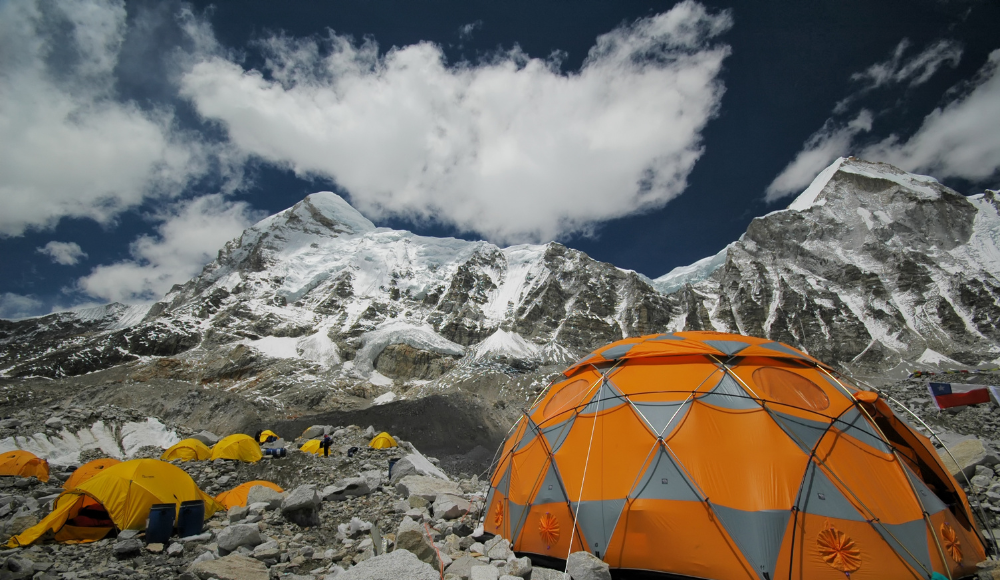
Are you in need of some wonderful escape away from the rigid lifestyle and want to take your adventure spirit where it belongs? If so, the Island Peak Climbing with EBC Trek is a great way to unfurl the potential to commence your climbing journey.
Imja Tse, also the Island Peak, is one of the most beautiful peaks to climb in the Khumbu region of Nepal. This peak got its popularity after the British expedition in 1953 as it appears as an island in a sea of ice as seen from Dingboche. However, in 1983, it was named Imja Tse, but the Island Peak remained the popular name of this mountain peak. It turns out that the peak is a continuation of the ridge that descends from Lhotse Shar's southernmost point. The Island Peak Climbing with EBC Trek today is an incredible fusion of trekking and climbing in the Everest region of Nepal.
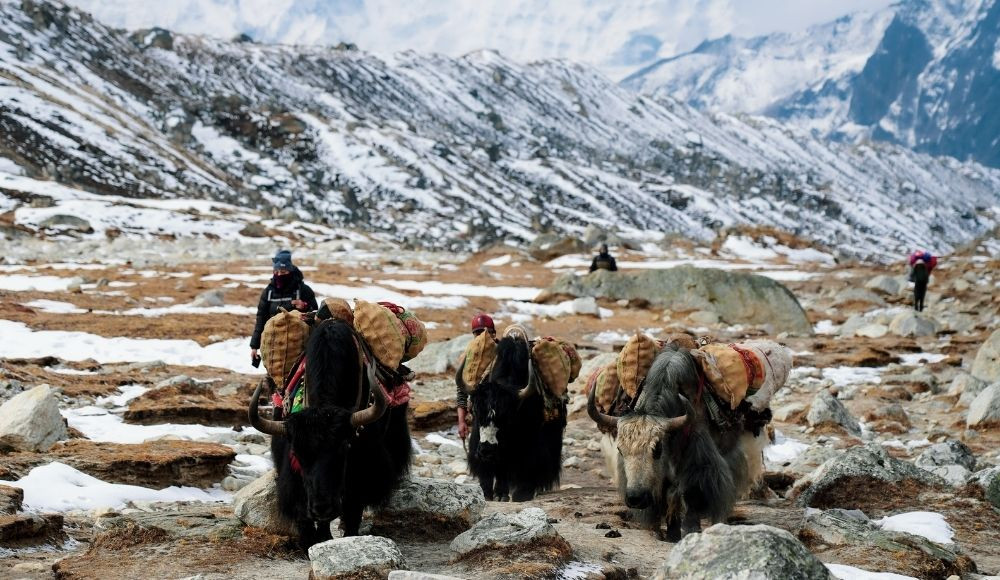
Climbing the mountain is never easy. It takes preparation and enthusiasm to climb peaks and is considered a great way to begin the mountaineering journey. The peak was first climbed by a British expedition team in 1953 as their training endeavour before climbing Mount Everest. The main summit was later conquered by a swiss expedition team in 1956 that made the first ascent of Lhotse and the second ascent of Everest.
Explore the majestic mountain panorama atop Island Peak.
Exotic flora and fauna of the Sagarmatha National Park.
Magnificent mountain vistas including several eight-thousanders.
Trek to the Everest Base Camp.
Explore the Sherpa culture and lifestyle.
Pursue your adventure to the peak and enjoy high-altitude climbing.
|
Trip |
Island Peak Climbing with EBC Trek |
|
Duration |
19 Days |
|
Himalayan Region |
Mahalangur Himalayan Range/Khumbu Region |
|
Major Activities |
Peak Climbing and Trekking |
|
Maximum Elevation |
6189 M |
|
Base Camp in Nepal Side |
Everest (Southern)/ Island Peak |
|
Start/Finish |
Kathmandu |
|
Elevation of EBC |
5364 m. |
|
Difficulty |
Strenuous |
|
Approx. Trekking Distance |
130 KM |
|
Accommodation |
Teahouse |
|
Average walk per day |
5-6 hours |
There is nothing else quite like being at the base camp of a Himalayan mountain. The air is thin, the view is vast, and the weather is unpredictable. But topping out one of these giants will be one of your most potent experiences as a trekker and mountaineer. And if that’s not enough to convince you, consider this: Imja Tse Peak with EBC is less than 20 days from Kathmandu by land and has been climbed and admired for being a stunning peak.
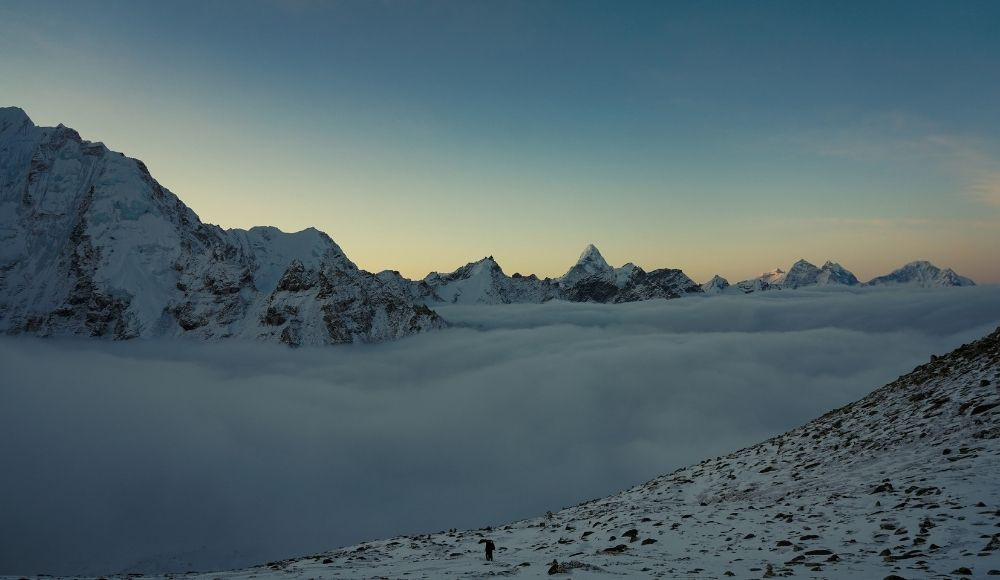
Imja Tse or Island peak is situated at an elevation of 6189 M above sea level. The Island Peak, combined with Everest Base Camp Trek allows you to explore a wide range of experiences. You could explore different vantage points and witness the different faces of mountains.
The base camp provides an excellent opportunity for those who wish to climb Mount Everest to acclimatize and experience the mountain's beauty up-close. However, climbing to the summit is not everyone’s cup of tea and many wish to reach Base Camp of Everest and return back. The trekking to Everest Base Camp is known for its majestic snowclad beauty, Himalayan aura and hard adventure in the Himalayas. The trek is ideal for adventure geeks who love to trek in the mountains and also explore the cultural dimension of the Sherpas.
Trekking in Nepal is admired for being diverse. It is further enhanced by a variety of experiences including culture, traditions, natural beauty and the snow-clad Himalayas.
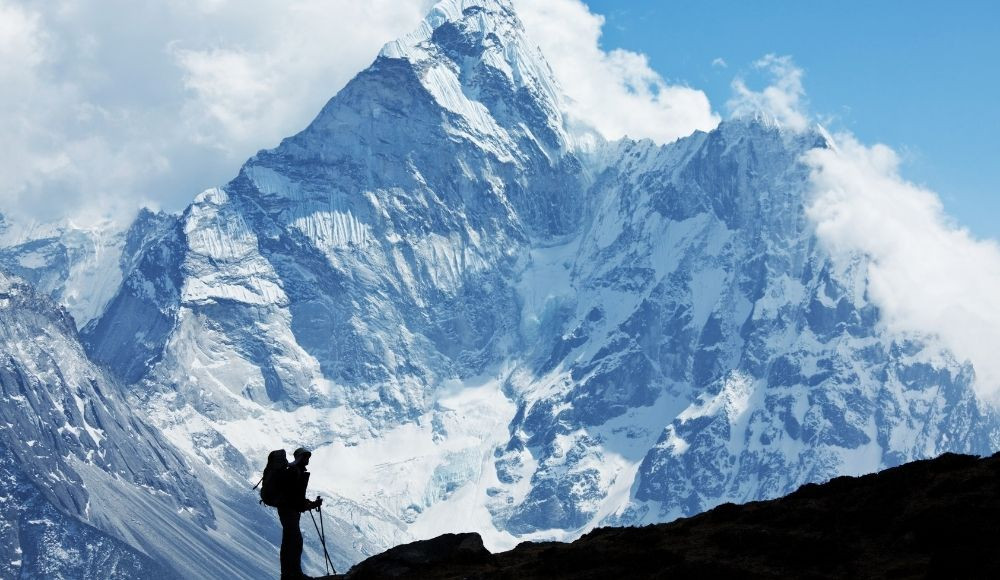
It's one of the most popular treks in Nepal, and for good reason. The Everest Base Camp Trek offers breathtaking panoramic views of the Himalayas, which include Mt. Everest (8,848m), Lhotse (at 8,516m), Makalu (at 864m) and Cho Oyu (at 8,201 m). It is a great trek for adventurers who want to see the big five (Mt. Everest, Lhotse, Makalu, Cho Oyu and Ama Dablam) or simply for those who want to get up close and personal with the tallest mountain in the world. The trek can be completed in 7-10 days or as a part of a longer round-trip trek.
Nepal is an amazing country for trekking, but if you are looking for something more serious, climb Island Peak while trekking to the Everest Base Camp. In recent years, Nepal has been called one of the most exciting climbing destinations for climbers of all levels. There are numerous climbing peaks that offer incredible high-elevation vibes and provide you with stunning mountain vistas. These are more of a vantage point, rather a place where you can unleash your adrenaline and pursue your adventure to the fullest.
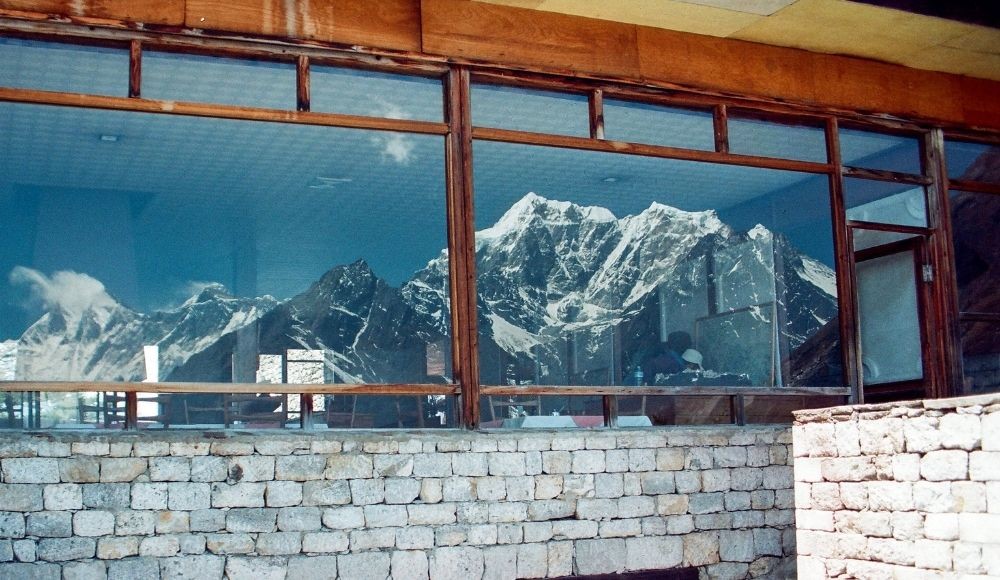
Everest Base Camp Trek and Island Peak Climbing in Nepal is something that every climber must experience at least once in his/her lifetime. It's an opportunity to share a moment with people who have a common bond, the great mountain.
The word exotic conveys a great image of what to expect and the place has a reputation to live up to. The travellers' stories are many, be prepared for the wonderful adventure ahead. The Island Peak climbing and EBC trek opens up an opportunity to witness the authentic grandeur of mountains while fulfilling your wish to complete your mountain adventure.
Mount Everest is an eight-thousander, the highest mountain on earth and a place where victories of mountaineering are made. Everest sits at an elevation of 8848.86 M above sea level and is known for its mountaineering ascents and British discovery.
The Himalayas contain Mount Everest, which is the mountain on Earth with the highest elevation above sea level. At its highest point, the boundary between China and Nepal stretches. The Chinese and Nepali governments most recently determined Mount Everest's elevation in 2020 at 8,848.86 m. The first documented ascent to Mount Everest's summit was on 29 May 1953 by Edmund Hillary and Tenzing Norgay.
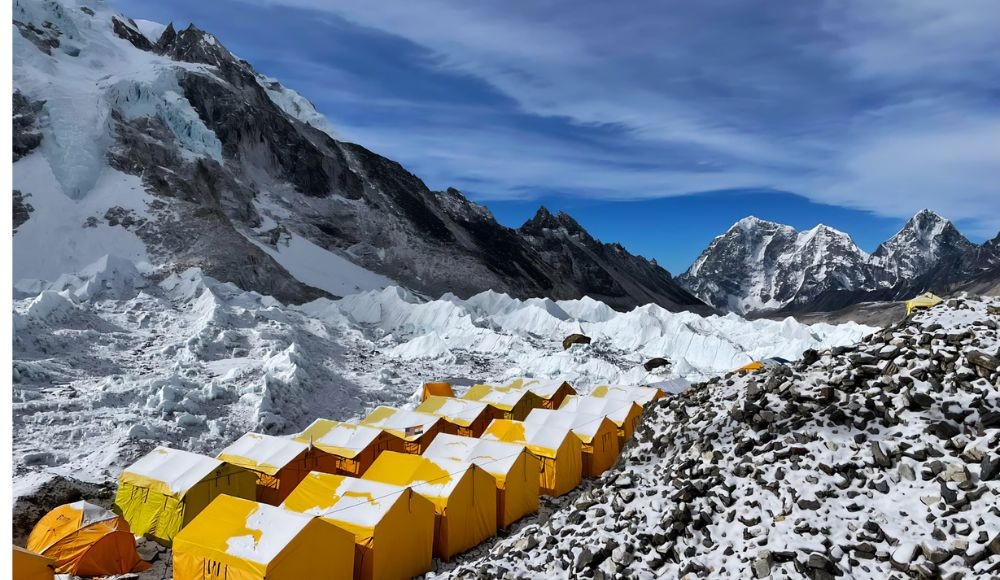
Ever since Edmund Hillary and Tenzing Norgay became the first people to reach the top of Mount Everest, people have been fascinated by this towering Himalayan mountain peak. More than 6000 climbers have learned to conquer Everest and make it to the summit. Yet many more who set out with high hopes only manage to make their way a few thousand feet up before they turn back or are forced off the mountain due to exhaustion and altitude sickness.
Since the first successful climb, more than 310 people have lost their lives while attempting to scale Everest. The climb has been likened to driving a car up a steep mountain road in ice or snow. The equivalent is almost an impossibility and the odds of survival are slim.
Mount Everest is located in the Mahalangur mountain range. In the Tibet region between China and Nepal, the land where Mount Everest lies is said to be an area of cultural, political and geologic conflict with three countries claiming sovereignty over it.
Trekking in the mountains is adventurous. It further helps you relinquish the monotony and provides an escape from the routine lifestyle and gives you a break. Mountain aura is pure, and pristine and provides you with the joy of a lifetime. Island Peak Climbing and Everest Base Camp trek are one of the best of such experiences that have been known to have some hardcore adventure and a sort of rush that can be braved in a short time and with less equipment.
Climbing Island Peak is not extensive, it can be taken as a preliminary climbing experience if you are planning to enter the mountaineering adventure. Further, the Island Peak has something to cling by, it provides you with the most beautiful mountain panorama, is doable and can be combined with Everest Base Camp Trek. The detailed itinerary of the Island Peak Climbing and Everest Base Camp Trek is provided below.
Kathmandu, the capital of Nepal is an incredible city to explore. You will be arriving in Kathmandu on this day. There are numerous temples, stupas and monasteries in Kathmandu that are a perfect representation of the spiritual conundrum that this mountain land offers. This city is known for its heritage and culture. The royal past of Nepal is mostly centralized and integrated into this beautiful city. You can explore the Durbar Squares, Medieval courtyards, alleys and old houses as also the local food.
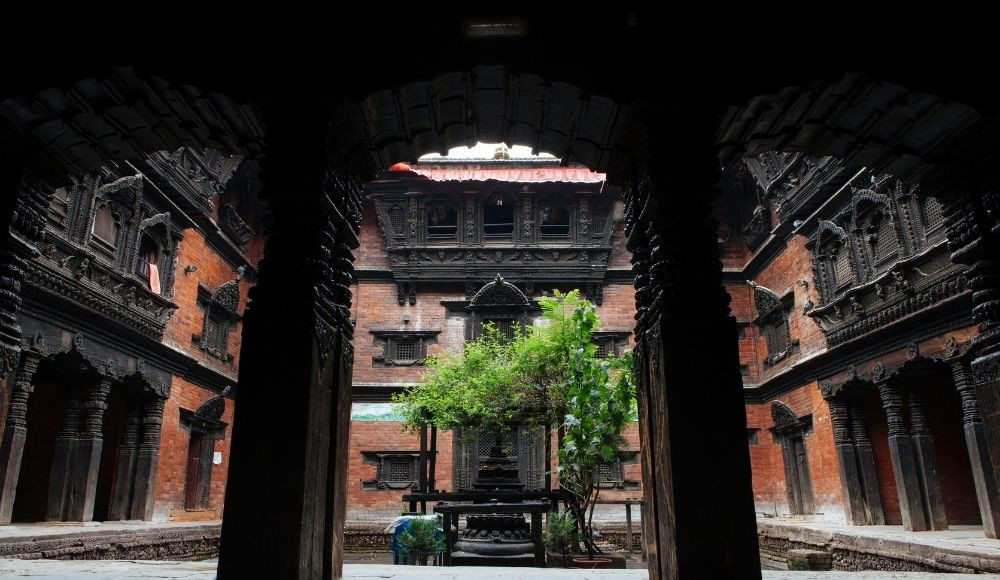
After you land at the airport, our representative will pick you up and you will be transferred to your hotel. Meanwhile, you will be briefed regarding the plan on this day in short and a detailed briefing will be provided the next day while helping you prepare for the trek. In the evening, you can explore the nightlife of Kathmandu and if there is time, you can stroll around the Thamel area in the evening.
Kathmandu is a vibrant city of art and culture that, fortunately, caters to tourists. It's not just the food, architecture and people that will attract visitors to Kathmandu - it’s also the prospect of witnessing some of the most interesting events and festivals in Nepal.
Kathmandu is known for its art and culture, so the best time to witness some of the city's festivals is during those months when art exhibitions and other cultural events take place all over Nepal. Some of these events have been around for centuries, and in most cases have been modernized, but that doesn't mean they aren't worth seeing. Even if you don’t have a specific time to explore such festivals, you can still see some sorts of festivities being organized, people worshiping temples and trees and exploring the utmost vibrance of the city.
You can't help but love the atmosphere in Nepal during the occasions when a festival or event is taking place. The entire city comes alive with color, and people from all over Nepal and neighbouring countries flock to Kathmandu to get a taste of the occasion. Anyone who has been to one of these events will tell you that they are an experience you won't ever forget. It's incredibly fun, mesmerizing and exciting, especially if you have never witnessed anything like this before.
Besides the festivals, there are plenty of attractions to see. The heritage sites, medieval durbar Squares such as Kathmandu, Patan and Bhaktapur Durbar Square, Swambhunath Stupa - the monkey temple, Pashupatinath Temple, Changunarayan temple etc. are the city’s attractions. You may be short of time on this day, but you can always plan to visit these places by extending the trip on your return if you want to. After visiting one or two places, you will get prepared for the trek tomorrow. Gather equipment and gears, understand the plan, know your itinerary and of course, if you have any confusion, ask our informed correspondent.
A flight to Lukla from Kathmandu commences the trek to Everest Base Camp and Island Peak. At a height of 2,860 meters, Lukla is a popular destination for trekking and shipping all year long. This airport receives almost every trekker and piece of equipment, and traffic has been steadily increasing over the years. Almost all treks start with a flight from Kathmandu to Lukla airport, a small airfield with a single runway located high in the Himalayas. For many treks in the area, it is the only way to get to Everest Base Camp and Island Peak.
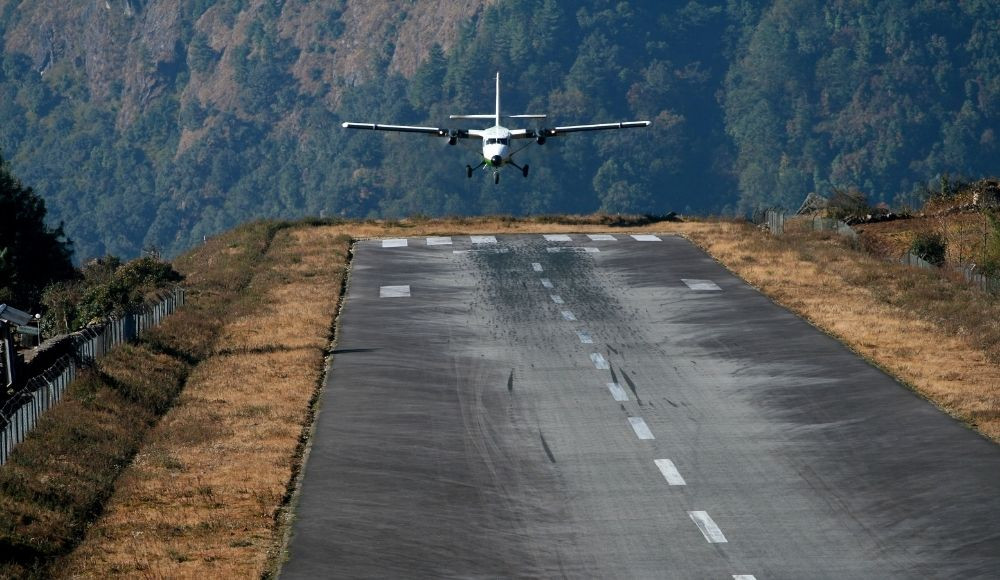 After a flight of about 20-25 minutes, you will reach Lukla from Kathmandu. Upon reaching, freshen up and begin your trek towards the plan of the day -Phakding. You will begin the trek to Phakding from Lukla. The trek segment today is beautiful. An interesting sight is a sound of bells ringing and herds of yaks, horses, and donkeys. These animals are employed to transport cargo to and from Lukla. You traverse a few suspension bridges on your journey to the settlement of Phakding. You'll have a mind-blowing experience crossing one of these bridges, with a breathtaking view of the mountains and perennial rivers. Finally, the Dudh Koshi River, one of the highest rivers in the world, becomes visible before you enter the major area of Phakding. Overnight stay in Phakding.
After a flight of about 20-25 minutes, you will reach Lukla from Kathmandu. Upon reaching, freshen up and begin your trek towards the plan of the day -Phakding. You will begin the trek to Phakding from Lukla. The trek segment today is beautiful. An interesting sight is a sound of bells ringing and herds of yaks, horses, and donkeys. These animals are employed to transport cargo to and from Lukla. You traverse a few suspension bridges on your journey to the settlement of Phakding. You'll have a mind-blowing experience crossing one of these bridges, with a breathtaking view of the mountains and perennial rivers. Finally, the Dudh Koshi River, one of the highest rivers in the world, becomes visible before you enter the major area of Phakding. Overnight stay in Phakding.
This day, you will begin trekking to Namche Bazaar. You will start early, and traverse through the beautiful sherpa hamlets and enjoy the beautiful vistas you trek across. Shortly after leaving Phakding, you will cross the Dudh Kosi River and continue along the west bank of the river. Compared to the trek from Lukla to Phakding, the route to Namche is a little bit longer and more difficult. You will pass past the little communities of Zamfute and Toktok. In the village of Monjo, there is an entry point where your permits will be verified. The suspension bridges, herds of yaks along, and the sounds of roaring glacial rivers are some of the astonishing experiences to explore.
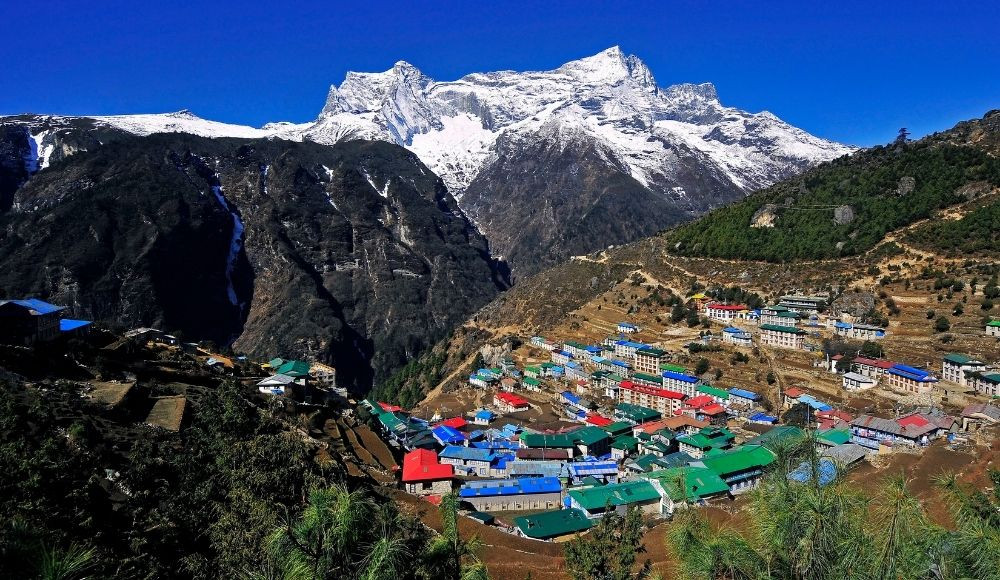
In this segment, the first view of Taboche (6542 M) starts to become visible. And you will be approaching Namche Bazaar Check point. You will be staying in the Namche Bazaar today. In the Everest region, Namche Bazaar, sometimes known as the "Gateway to Everest," is a Sherpa settlement. The Khumbu region's unofficial capital is Namche Bazaar, which is located at 3,440 meters. For vendors from the lower region and higher altitude, it serves as a gathering place where they can sell their wares and goods and also acts as a trade hub.
At an elevation above 3000 M., you become prone to altitude sickness. So, acclimatization at such heights is extremely important. It allows your body to adjust with rapidly changing altitudes. Since you will be trekking faster than other parts, you need to adjust with the elevation and the only way to do that is by taking a day break. You will be spending your acclimatization day strolling around Namche. Hike to Everest view Hotel, or Thame or Khumjung.
You can also explore the national park office, Sherpa Museum and information centers around Namche Bazaar. If you are lucky enough, you may meet some famed sherpas who are known to have some special climbing history. The mountain tales are best explored in Namche. This place is where most of the people of Everest gather and talk about their encounter of the majestic panorama. The Pubs, Cafes and Bars are also there to enjoy some break time. You will spend your day exploring the most beautiful parts of Namche on this day.
The Namche to Deboche section of the trail is beautiful, and has some uphill climbs. You'll continue on the path that ascends to the top of a hill that provides a sweeping view of Thamserku, Kusum Khangru, and Kongde Ri. The vistas of Ama Dablam, Lhotse, Everest, Taboche, and Nuptse suddenly become visible after circumnavigating a branch ridge. You will begin to descend into the Dudh Koshi River, cross it, and then begin to ascend in the direction of Tengboche.
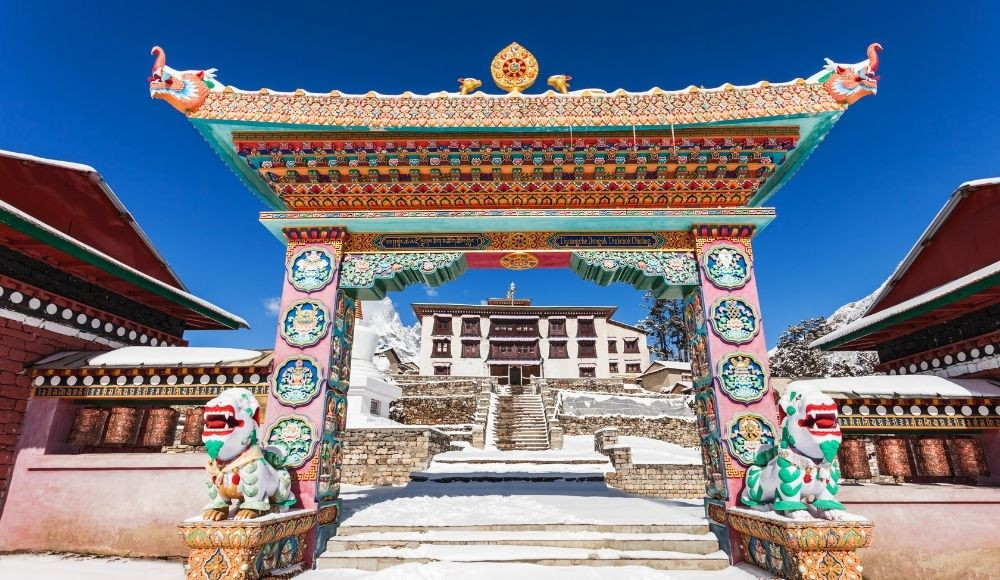
The climb up to Tengboche is difficult in the beginning, but as the trail gets closer to the forest, it becomes less difficult. In the late afternoon, you'll tour one of the largest monasteries in the Khumbu region. One of the outstanding panoramic views of the snow giants is from Tengboche. Spend the night at Deboche, which is 5–10 minutes by foot from Tengboche.
After Pangboche, you will continue on our trail through a rhododendron forest to Imja Khola. You will next ascend to Pangboche hamlet, a Sherpa village with the oldest monastery in the area (3930m). After that, you'll start traveling toward Somare, another village, until you arrive at the lovely Dingboche village. Stay the night in Dingboche village.
You'll have another day of acclimatization today. You will travel to Chhukung, which provides you with a breathtaking view of Mt. Makalu, Island Peak, Peak 38, and other mountains in the Khumbu region. Spend the night in Dingboche.
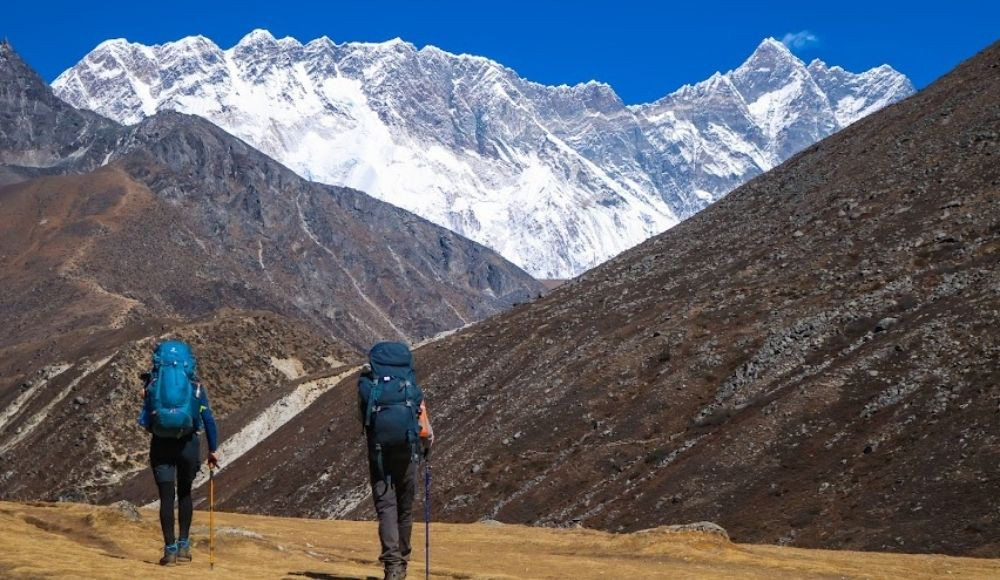
You'll turn and walk toward the arid valley vegetation. The Everest Base Camp trek route's most crucial day is today. One may observe a 360-degree panorama of snow-capped mountains at Thangma Riju. Below Thugla, the walkway connects to the trail and offers stunning views of Cholatse (6442), which is visible across the valley.
The trail has some areas that are ice and rough. Taboche, Pumori, Kalapatthar, and Nuptse are particularly stunning from Lobuche after another arduous trek. Spend the night at the Lobuche teahouse.
The most significant day of our trek is today since you will be at Everest Base Camp. The Khumbu Glacier is traversed on the trek to Everest. You will arrive at the little settlement of Gorakshep and eat lunch there.
The trail will take you to the Mt. Everest base camp at a height of 5,364 meters after we finish our lunch. Instead of Mt. Everest, Khubutse, Mt. Pumori, Changtse, and the Khumbu icefall are visible from the Everest base camp.
In the early morning, you will hike to Kalapathhar - the magnificent viewpoint. It is the most intriguing day of the entire walk as you get closer to your target, the base camp of Mount Everest. You will pass the Khumbu glacier on your trek. Even if it is hard to hike there due to the glacier's harsh terrain and the difficulty of the sedimentary rocks, reaching the base camp is the most exciting part of the journey. The peaks that separate Nepal from Tibet include Pumori (7,145m), Khumbutse (6,623m), Lingtren (6,697m) etc. are visible along the way. After exploring Kalapatthar, you will trek down to Dingboche.
It takes around two hours to hike very easily and gradually uphill from Dingboche to Chhukung. From Dingboche to Chhukung, the terrain is mostly made up of short scrubby shrubs, rock and scree fields, and boulder-strewn meadows. Looking back, Dingboche is still visible for almost the whole hike, making the pace seem leisurely. Additionally, you will come across a memorial stupa honouring climbers who lost their lives while scaling Lhotse's south face.
Chhukung (4730m/15,514ft) eventually appears after passing the prayer flag-draped chortens, stupas, and mani walls and bounces through stepping stones over partially frozen waterways. Despite the settlement's lack of aesthetic appeal, the surrounding Himalayan peaks, including Ama Dablam, Taboche, Nuptse, Lhotse, and Island Peak, create a magnificent amphitheatre that entirely encloses the valley village. You will be staying in Chhukung for the overnight stay.
Beginning early in the morning, you will be climbing the rock culvert. The inclining path turns at the Lhotse glacier and climbs along the south side. Up until a large boulder, the easy stroll along the riverbank continues in this segment of the trek. Though there is not adequate greenery, you can still see some magnificent Himalayan vistas and enjoy what the Himalayan atmosphere has to offer. The zigzag path then passes Imja and leads to Lhotse Glacier before widening into a valley. The base camp is located southeast of Island Peak, where we pitch our tent and spend the night. Tomorrow, you will be climbing the Island Peak summit and return back to Chhukung.
The most crucial day of the trip is today. Just follow your guide as you depart from Island Peak Base Camp at around post-midnight. You leave all of your belongings at base camp and only get a daypack with a packed lunch, water, a camera, and some chocolates. It is crucial to get going early since we need to reach the summit before it gets too windy and hazy in the late afternoon.
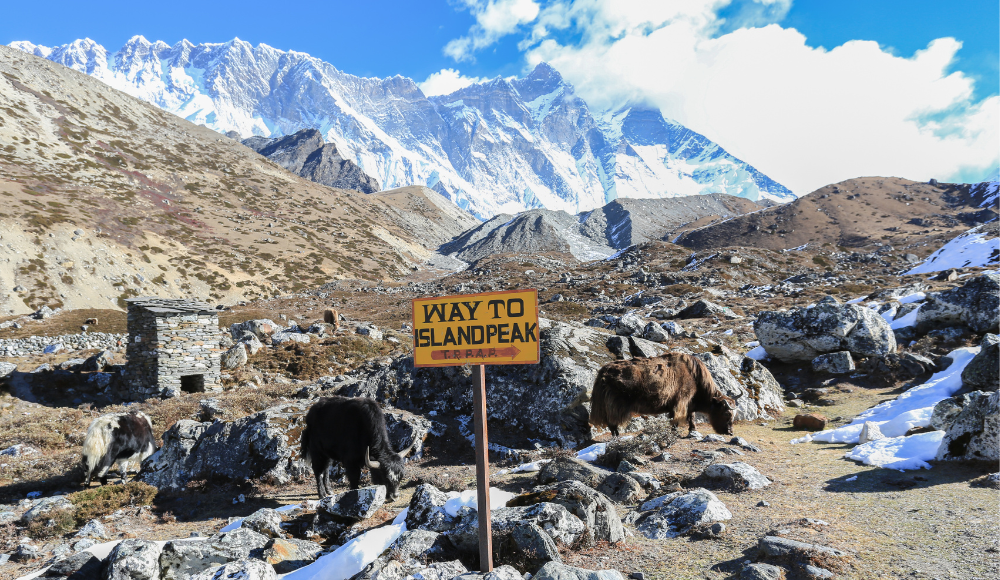
You will arrive at Crampon Point and set Crampons after a three-hour hike through High Camp. Trek to the Imja Glacier by walking along a short, ice track supported by the main rope at a height of 5700 meters.
The technical portion of the trek involves climbing a vertical wall before reaching the summit. You will hang onto the fixed rope as you make your way along the ridge to the summit of Island Peak. You will be descending using the same way to Island Peak Base Camp after spending some time at the peak. After climbing the peak, you will descend down to base camp and return to Chhukung for your overnight stay.
You will descend from Chukhung to Pangboche on the same route that was used to ascend, then retrace your steps to reach Tengboche. You will stay the night in Tengboche following this 4-5 hour trip.
You will be trekking from Tengboche to Namche this day. The segment of this hike is easy and doable. While there are a few downhill stretches here and there, for the most part, you will be hiking on a fairly steep path. A 5-6 hour trek will get you from Tengboche to Namche Bazaar. You can see Sherpa settlements and the breathtaking Himalayas. Stay the night at Namche.
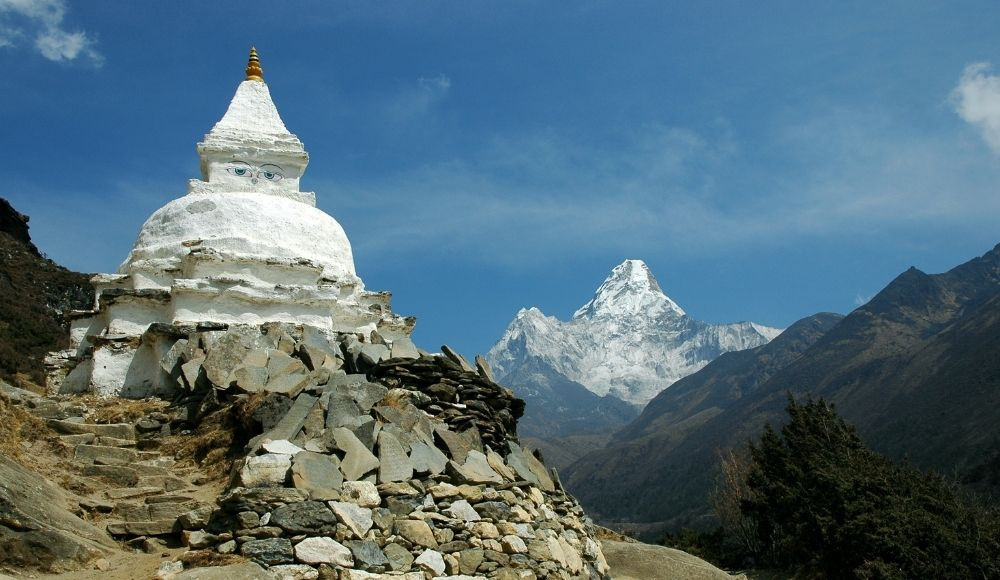
After having breakfast in Namche Bazaar, you will proceed to hike toward Lukla. You will reach Jorsalle and Monjo after passing through the checkpoint and begin your journey to Lukla. This is the last day of trekking in this region. The next day, you will be returning back to the Kathmandu valley.
On this day, you'll head back to the Kathmandu Valley. From Lukla, you can take a flight back to Kathmandu. In the evening, you can partake in some Nepalese cuisine or take in some of Kathmandu's nightlife. The expedition to Everest Base Camp and Island Peak comes to an end after amassing incredible memories from the renowned mountains.
The Everest Base Camp Trek will have come to a conclusion with this. As long as we are aware of your departure schedule, we will accompany you to the airport for your flight transfer. You'll depart for your destination with an abundance of hilarious and exciting memories as well as striking photos.
|
Permit |
Sagarmatha National park entry fee |
Khumbu Pasang Rural Municipality entry fee |
Island Peak Climbing Permit cost |
|
Cost for Nepali |
NPR 100 |
- |
NPR 4000 (Spring) NPR 2000 (Autumn) NPR 1000 (Winter and Summer) |
|
Cost for Indian |
NPR 1500 |
NPR 2000 |
USD $70 (Winter and Summer) USD $250 (Spring) |
|
Cost for foreigners |
NPR 2000 (~US$17) |
NPR 3000 (~US$25) |
|
|
Garbage Deposit (Refundable) |
- |
- |
USD $500 |
EBC and Island Peak Climbing are admired for the jaw-dropping adventure the mountains offer in the Khumbu region of Nepal. Everest Base Camp Trek is a popular option for those looking to experience the best trek in the world. It's definitely not like any other trek you've done before, with breathtaking views of Mt. Everest and Kala Patthar in addition to rising above some of the most breathless mountain peaks around.
If you're looking to try something new, or even better, if you're looking to make an adventure worth doing in the Himalayas, EBC Trek and Island Peak Climbing can provide the perfect getaway. This expedition to Mount Everest Base Camp and Island Peak is worth noting because this is a once-in-a-lifetime experience.
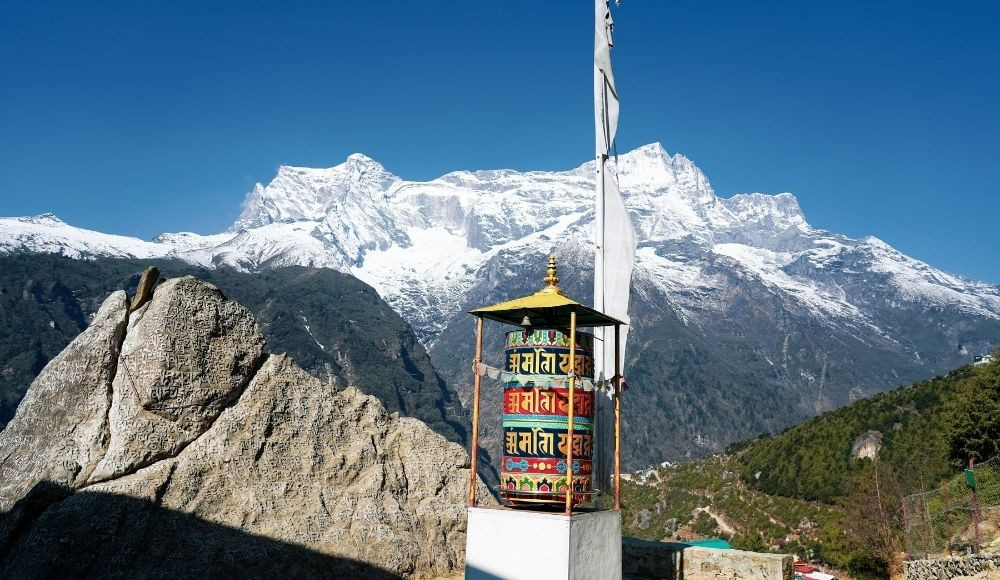
For a short expedition to an adventurous peak, the gear list can be as minimal as it gets. So, you do not need to hassle about the exhaustive list of climbing gears and having to prepare a great deal in advance. Most of the people who trek to the Everest Base Camp, do not opt for the Island Peak Climbing. But nowadays, with the growing desire to explore most of what the mountains are, people are taking their adventure spirits to a new arena. Climbing Peaks is no more than just an adventure-fueled passion and a quest to fulfil the desire to brave achievable heights.
A mix of trek and climb offers a wonderful intro to Himalayan climbing. If you are seeing yourself as a potential mountaineer, then this would be an amazing activity to do. Perhaps a thirst, worth quenching.
The trek will take you from Kathmandu to Everest Base Camp, and in return, you will climb the Island Peak summit and continue towards Lukla. A flight from Lukla takes you back to Kathmandu again. It will climax with the summit of Mt. Island Peak and the Khumbu Icefall before returning to Namche, then trekking back out again to reach Lukla from the same route.
Island peak is an easy trek in the Everest region. It has a height of 6,189 meters, and those who take it on will have to scramble up a steep and narrow ridge to get to the summit. The journey is made even more dangerous by the fact that the mountain's weather can change quickly, causing snow to fall on the route unexpectedly. However, with proper guidance and a well-informed guide, you can complete the trek easily. Rather than climbing an eight-thousander, Island Peak Climbing is regarded as one of the most beautiful and easy climbs in the Everest region.

Island Peak climbing is comparatively easier than climbing other peaks. Since it’s also combined with the Everest Base Camp trek, you will have enough time for acclimatization, resulting in better chances of completing it. Also, having a first aid kit and insurance is helpful at higher elevations.
Also Read: Best Time to Visit Everest Base Camp
If you're looking for an adventure that's not too extreme, but also not too easy, then Island Peak climbing is perfect for you. Yes, there are dangers to climbing a mountain at over 6,000 meters in elevation - like altitude sickness. But don't let this stop you! There are ways to prevent it from happening, and once your body adjusts to the altitude changes (usually 1-2 days), most people with no previous history of altitude sickness should be able to climb Island Peak without any trouble.
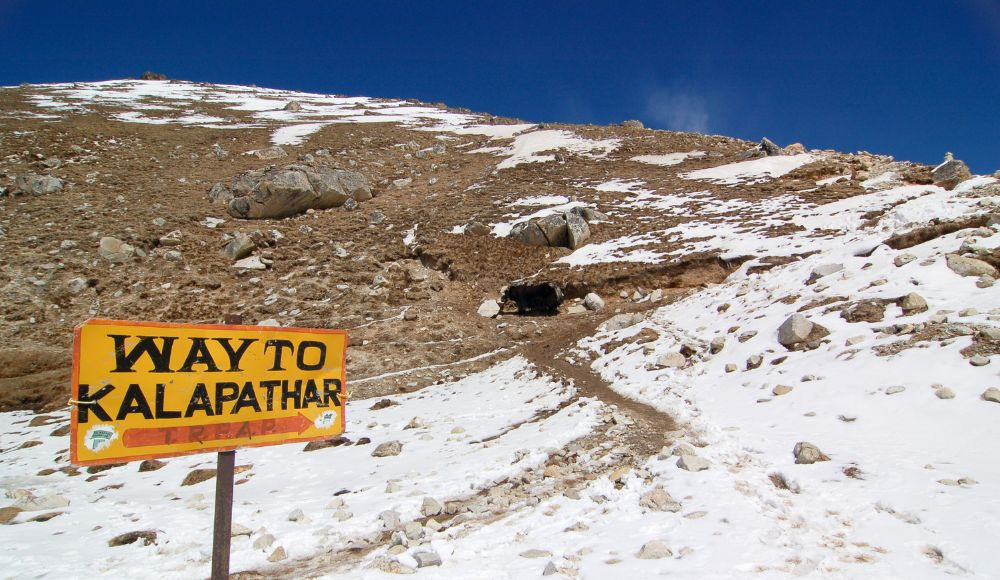
Because it's in the Himalayas, you can also expect to see some beautiful views along the way. And this is not a peak that is climbed without taking care of your own safety. It is important for climbers to be aware of possible avalanche risks, altitude sickness, stream of air, and weather uncertainties and to inform that, you will be followed and guided by experienced guides.
Since Island Peak is a doable peak and with some knowledge and skills, can be climbed, it’s worth climbing. You can explore the Himalayan vistas as you climb the heights and also see the most beautiful views of the Khumbu valleys. Also, Peak Climbing acts as an introductory mountain experience, and it will be helpful if you are considering climbing mountains.
Island Peak is a reasonably uncomplicated peak to climb but, it should be noted, requires prior acclimatization and fitness training. There are two routes you can take to get to the summit: a South East Ridge or an East Ridge. The latter is more technically challenging and requires some rock climbing experience - generally speaking, an ice axe and crampons are required equipment. The climbing times are basically the same regardless of the route taken.
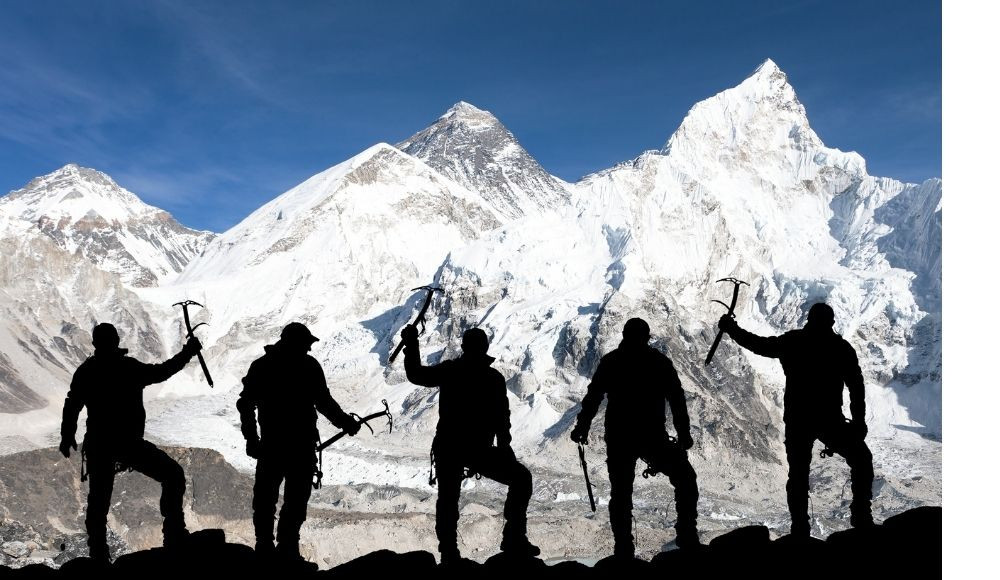
Island Peak is situated in the Khumbu region of Eastern Nepal, at the foot of Everest and Lhotse. It lies between the Lhotse/Nuptse and Baruntse. The island peak (6189m) climbing needs the crossing of a crevassed glacier in the peak.
Climbing is one of the few activities that offer a physical and mental challenge that will engage individuals of all levels, from experts to beginners. However, since every type of climber requires a different amount of specialized training and equipment, it's difficult to give out general tips on how to improve your climbing ability. There are several climbing routes that are highly rated, but the best way to improve your climbing is to practice.
If you are planning a climbing experience in Nepal, Island Peak Climbing with EBC trek is a great way to pursue the adventure. It is one of the best peaks to climb in Nepal that takes you to the most astonishing mountain summit of Nepal from where you can witness the beautiful mountain vistas, and Himalayan ranges followed by the incredible scenery of the Khumbu region.
Peak climbing is a great way to begin a climbing adventure. It is said that a single session of climbing should be able to meet all your climbing needs, ranging from learning the basic skills to testing what you've learned. The key thing for all climbers is to always ask other climbers for feedback on their technique and progress. There are several ways in which one can train for his or her level, but it's important that you apply these methods consistently.
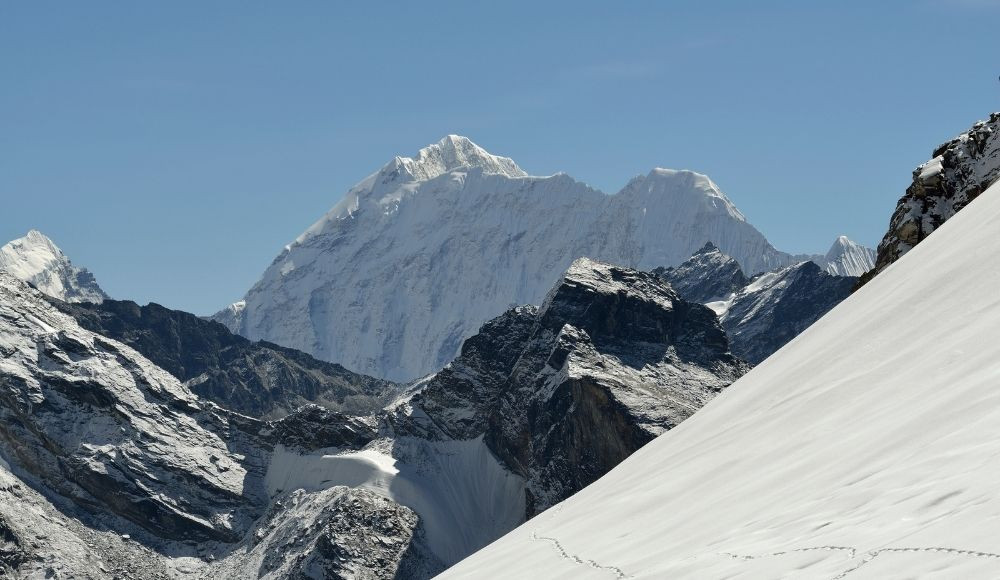
Since climbing can be both physically and mentally demanding, it's important to focus on what you're doing when you're climbing, as well as to focus on your body when you're done. Climbing can help with hand-eye coordination, balance and agility, which are essential skills that improve the quality of life in general. But it isn't always easy to find the right path to enhance your climbing skills. This is because every climber has different needs, which makes it hard to come up with a useful tip for everyone.
The secret to becoming a good climber is to focus on what you are doing when you climb. This can be achieved by focusing on your body, as well as your surroundings, whether it's on a mountain or in the gym. The key here is to focus on the process and not the end result. Being aware of the effort that goes into climbing will help you develop a more rewarding experience.
Peak climbing, that too in high elevations, can be strenuous. But with a positive attitude, good training and physical fitness, it can be achieved. Peak Climbing is also a great way to test your limits and learn basic mountaineering skills.
Peak Climbing is an activity that requires strenuous efforts for a successful ascent. On the brighter side, what can be achieved is you can enjoy a more inclusive form of a travel dimension, making it work and enjoying what the mountains have to offer.
When you think about the mountains, you probably don’t think about the altitude. But at different altitudes, there are different levels of oxygen in our air and this can be dangerous if we don’t know what to expect. There is a point where high altitude sickness takes over and makes sense of our body's toxic state. We do not always experience this immediately and when we do, it can be deadly.
Tests have determined that there is a point where exercise becomes detrimental. As you move higher, you are unable to take in enough oxygen. The thinner air restricts your breathing and gives you a headache. When your body runs low on oxygen and sustains too much pressure without sufficient time to react, it can cause altitude sickness. Under these circumstances, the body sends out distress signals and causes our internal organs to shut down.
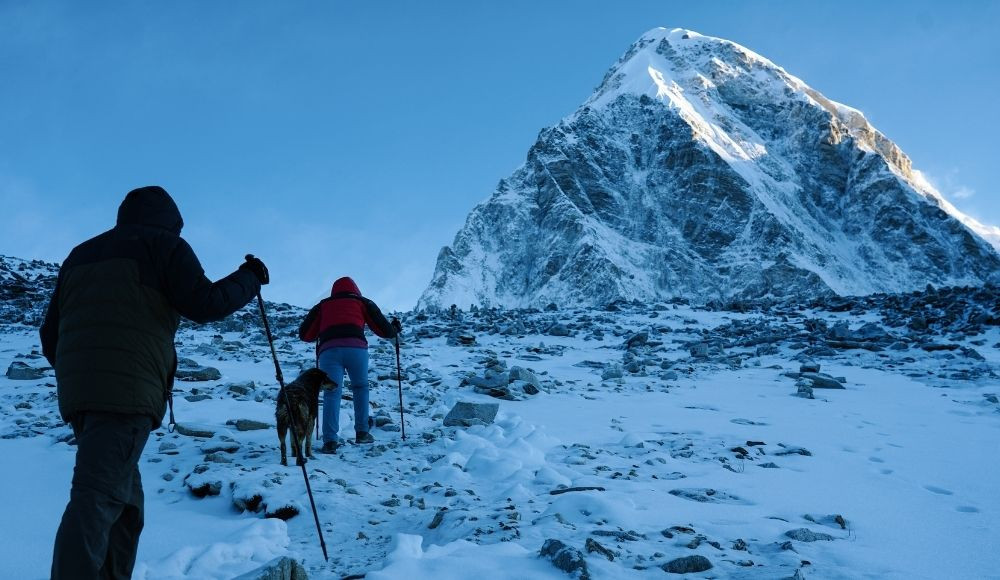
It is fine to ascend gradually over the course of a few hours or days. But going up too fast can damage your body. It is a common mistake among trekkers and mountaineers. When you are on a plane, think of it this way, we are all under pressure because we are unable to breathe enough air at high altitudes. But in the open air of high mountains, our body needs time to adapt to the changing climate. The effects of altitude sickness can be mitigated with proper care and precautions. In case of difficulty, it’s important to descend or consider heli evacuation.
Since you will be carrying everything with you for the duration of your journey, it is important to pack as lightly as possible. Even though every single inch of your backpack will be accounted for, you may want to bring a few extra items just in case. In order to avoid any unnecessary weight and bulk, consult your correspondent and guide.
You may want to bring certain items of clothing that you know you will need specifically because they will be too difficult to replace at your destination. If this is the case, then make sure that you are carrying the essential items and weather-friendly clothing. For the detailed checklist, visit Nepal Trekking Gear Checklist.
Island Peak is popular as one of the most beautiful peaks in the Khumbu region. It offers spectacular views of the Mahalangur Himalayan range and other neighbouring peaks and Himalayas. The jaw-dropping views of the Himalayan landscapes are the major attractions of this peak. Additionally, this iconic peak also acts as an introductory mountain if you are planning to brave high elevated Himalayas.
Island Peak offers a wide range of Himalayan views including Everest. Since, it is one of the highest vantage points and a peak with an elevation of above 6000 m, most of the Khumbu mountains are visible from Island Peak.
It may be a possibility in an ideal situation. But mountains have a very unpredictable nature. For safety and support reasons, you can’t climb alone. You will need a guide who has an in-depth understanding and experience of climbing and who can help you deal with unpredictable situations.
Island peak or Imja Tse is easier than many other mountains. But you should understand that the elevation of this peak is still above 6000 m. and the trail is difficult at such elevations. However, having proper guidance, acclimatization and good exercise can help you achieve the feat.